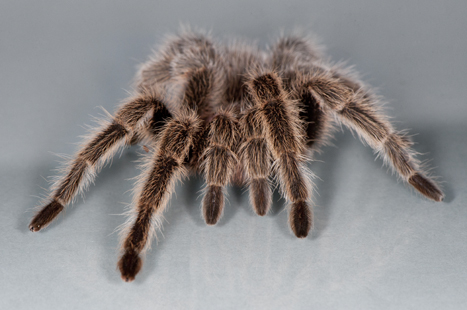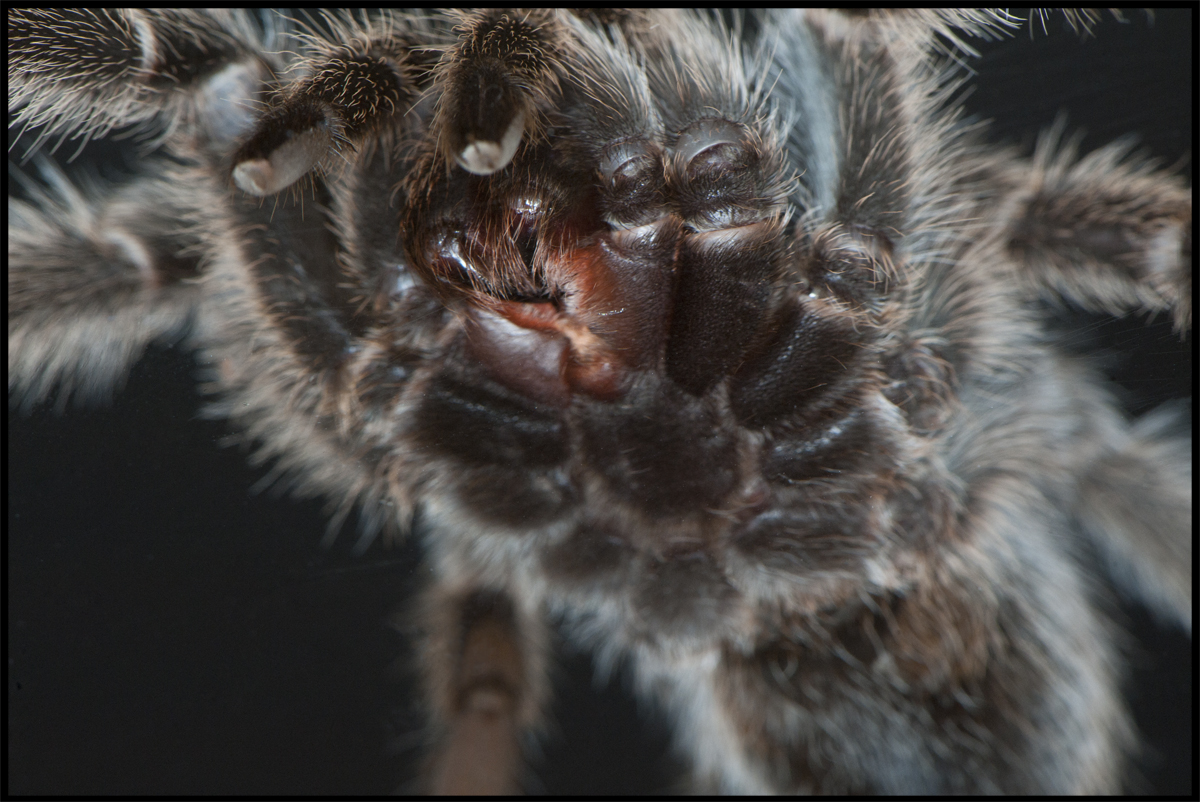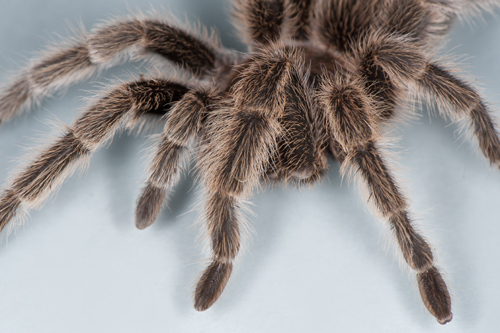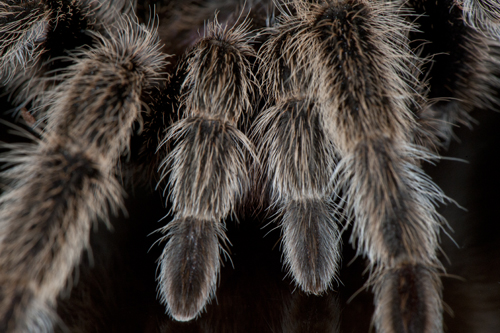 Close up image of spinnerets of Grammostola rosea Close up image of spinnerets of Grammostola rosea
|
Anatomy:
Easily mistaken for another set of legs, the pedipalps are two six-segmented appendages attached to the thorax near the mouth. At the end of each pedipalp are sharp plates (maxillae) used to crush food. The pedipalp also aid in feeling and capturing prey. On male tarantula the pedipalps also function as part of the reproductive system. Male tarantulas spin a silk platform onto the ground and excrete semen from the glands in their opistoma onto the platform. The semen is then absorbed into the end of the pedipalp and then inserted into the reproductive organ of the female.
The four pairs of legs of the tarantula each have seven segments from the inside out are the coxa, trochanter, femur, patella, tibia, tarsus and pretarsus, and claw. The 2 or 3 claws at the end of each leg aid in climbing.
On the end of opisthosoma are the spinnerets. The spinnerets function as the tubelike structures from which the spider excretes its silk. On the end of each spinneret is called the spinning field and each field is covered by approximately one hundred spinning tubes. Silk hardens with contact to air and becomes threadlike.
Regardless of the terrifying appearance, there has been no tarantula bite known to be deadly to humans. The G. rosea will give a thorough warning before striking. The rose tarantula will rear up its front legs in defense and if this does not ward off a predator the tarantula will flick urticating hairs at its attacker. |


 Close up image of spinnerets of Grammostola rosea
Close up image of spinnerets of Grammostola rosea

